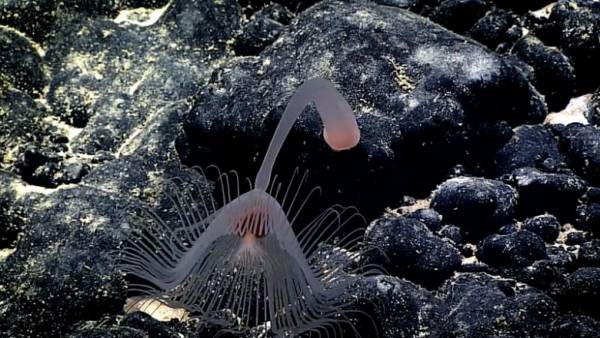The most incredible forms of life found in the depths of the Pacific ocean
Biologists with the Okeanos Explorer, a ship of the National oceanic and atmospheric administration, has studied the depths of the sea in the territory of American Samoa in the Pacific ocean. There they found a huge amount of strange and amazing creatures, again reminding us how little people know about the oceanic fauna.
Upstairs
On the sea the territory of American Samoa are three marine reserve: rose Atoll, national Park of American Samoa and the national marine sanctuary of American Samoa. They protect long coral reefs, deep reefs, hydrothermal vents and even archaeological relics.
“During the expedition we saw dozens of new species of starfish, sponges, corals and molluscs, samples some we took,” says Santiago Herrera, a member of the expedition.
But one of the most remarkable video of the expedition. Of course, these species already known to science, but so close they are removed extremely rare:
 During the download an error has occurred.
During the download an error has occurred.
In the video above you can see the marine Venus flytrap. This large sea anemone also closes his tentacles to catch the prey or to defend themselves from the enemy. The tentacles are equipped with stinging cells, like microscopic harpoons, introducing the poison. It used to be that in the Pacific they almost never occur.
 During the download an error has occurred.
During the download an error has occurred.
On seamounts, the Uta researchers have stumbled upon a rhopalonematid trachymedusa, transparent jellyfish, nicknamed the “space Medusa” for its appearance, like a UFO. Glowing yellow parts are the reproductive organs, and red is the digestive system.
 During the download an error has occurred.
During the download an error has occurred.
In the video above you can see the armored Trigla, which uses modified fins as legs to walk along the seabed.

And this is hydroid, which explores the rocks on seamounts Lease. These look like the alien creatures are close relatives of jellyfish, but behave very differently. They are attached to stones, and then two rows duplicating mouths to grab food floating around.
Of course, it’s not all animals and interesting objects discovered in the expedition. Octopuses, different corals, strange sea star — all this you can see in the photos from the Okeanos Explorer:
14фотографий14фотографий14фотографий